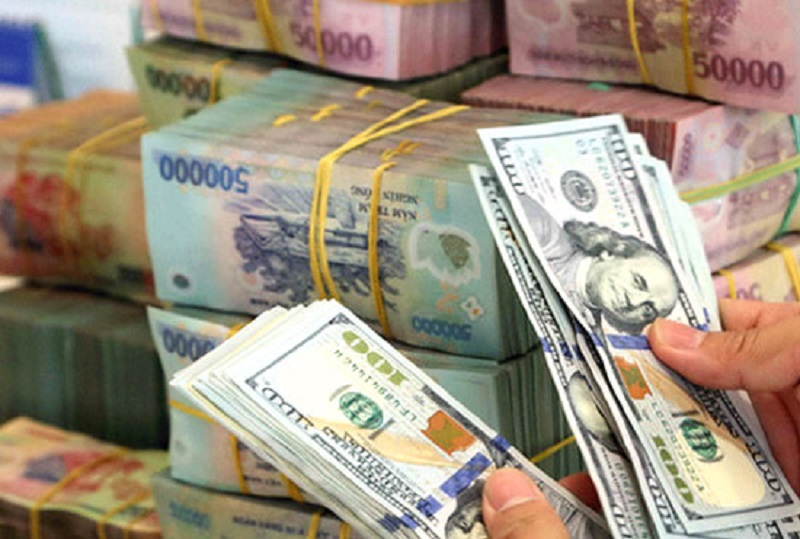Keeping loan rates low is tough
Experts believe that if some banks begin to raise deposit interest rates, lending rates will likely follow, particularly in credit institutions with fragile financial foundations.
According to a group of specialists at the Banking Academy's Research Institute, credit is predicted to reverse its downward trend to climb again in March 2024 (0.26%), while growth in deposits remains 0.76% lower than at the start of the year.
.jpg)
The factor affecting the recent increase in deposit rates is the rise in the price of other assets.
The credit-deposit gap in the bank system has reached 230 trillion VND, and combined with the State Bank's recent measures of absorbing more than 171 trillion VND through treasury bills, the banking sector's liquidity has fallen since the end of the year.
Interest rates at several commercial banks (MSB, VPBank, Kienlong Bank, etc.) began to rise again in early April 2024, with annual increases ranging from 0.2% to 0.5%, following a long period of decline.
Since the beginning of the year, the interest rate disparity across commercial bank groups has tended to diminish. Notably, deposit rates at state-owned commercial banks, which had the lowest rates in the group, have risen to the top since the beginning of March 2024.
The growing price of other assets is driving deposit rates higher. Asset values, including gold, equities, and real estate, rose sharply in the first quarter of 2024. This prompted consumers to invest their spare money in financial assets rather than bank accounts, comparing investment returns against deposit rates. As a result, if commercial banks wish to boost their competitiveness and attract public money, they will be compelled to raise deposit rates in line with the overall trend.
"The inflation trend is a favorable indicator for interest rate control. Inflation rose in March 2024, with the key sectors being education, healthcare, and housing. However, inflation remained under control at 2.81% throughout the first quarter of 2024 when compared to the same time in 2022 and 2023. This demonstrates that inflation has not yet exerted pressure on the State Bank's exchange rate and credit control actions during this time," the expert committee said.
According to a recent WiGroup report, deposit rates at state-owned commercial banks, large commercial banks, and other commercial banks increased by 0.5% in April 2024 compared to the previous month; however, the overall level of deposit rates across commercial banks remains low. Thus, commercial banks' liquidity is robust, and deposit rates are projected to continue low until the demand for credit grows again in the second half of 2024.
In an interview with a reporter, Dr. Nguyen Tri Hieu, a banking finance specialist, acknowledged that the recent increase in savings interest rates might be seen from two different views. First, customers' discontent with historically low savings returns has driven them to seek alternative investment avenues, such as gold, which has become a more appealing option. This has driven banks to raise savings rates in order to attract and keep consumers while also maintaining and improving relationships with them.

Against the backdrop of banks raising deposit rates, concerns about corresponding adjustments to lending rates are becoming more apparent.
Second, credit growth was slow throughout the first four months of 2024, even falling in the first month. However, at the end of April and the beginning of May, banks began to detect a resurgence in credit activity, which encouraged them to broaden their lending scope, which equates to mobilizing additional resources to fulfill rising loan demand.
Concerns about equivalent changes in lending rates are growing as banks raise deposit rates. Experts believe that when deposit rates climb, lending rates will follow, particularly at banks with fragile financial foundations.
If deposit rates rise without equivalent increases in lending rates, many banks' profitability would undoubtedly suffer. However, this will not happen instantly; loan rate increases may take longer than projected.
Dr. Nguyen Tri Hieu found that the process of mobilizing money and deploying it into the economy often takes 2 to 3 months. This time is required for banks to analyze relevant expenses and make the best possible lending rate selections.
"In the second half of the year, when the economy is touched by monetary measures from the United States that stimulate credit activity, interest rates may rise. At this moment, depositors should prioritize short-term deposits to capitalize on the possibility to reinvest at higher rates later in the year.
Meanwhile, those in need of loans should pick longer periods to lock in present interest rates before future rates rise," Mr. Hieu urged.








